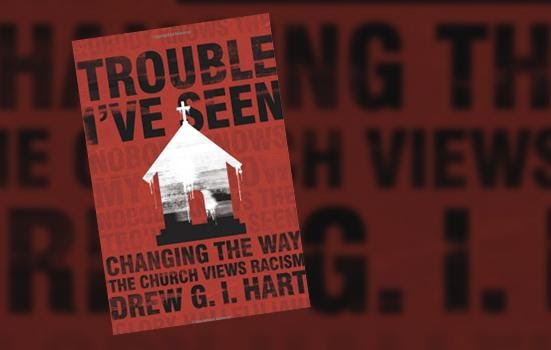Trouble I've Seen, Part 3: Critical Race Theory (CRT)
This post is part three of a series of topical thoughts inspired by the book Trouble I’ve Seen: Changing the Way the Church Views Racism by Drew G. I. Hart.
Trouble I've Seen, Part 1: Horizontal and Vertical Racism
Trouble I've Seen, Part 2: The Race Card
I got back on Twitter when quarantine started thinking I'd have more time on my hands (yeah, right). Most of the people I follow are Christian authors/ministers/academics and one of the hot topics across social media was debate over what is called Critical Race Theory (CRT). Last year the Southern Baptist Convention passed a resolution stating CRT can be used as a "tool" but that the Bible holds ultimate authority, which I guess duh? But it was the only resolution passed with significant dissension. The argument goes: the going-in doctrinal position is that "racism" is a term used by the world (i.e. those outside the church) to divide, and that racism does not and cannot exist in the church because, as the Apostle Paul explained, "all are one in Christ Jesus" (Galatians 3:28). So to even consider CRT is in itself divisive and worldly. (Simply put, racism is a sin. And since Christians have repented of their sin, they therefore cannot be racist. A convenient excuse to ignore the issue, but I digress.)
What Is CRT?
It is a sociological area of study that applies what are called critical methods to race relations. CRT stretches the definition of racism beyond the relational to the social and structural. But that's too academic. Hart references a couple of "critical race theorists" who explain that definitions of race are social constructs that historically are "at best imprecise, and at worst completely arbitrary. They may be arbitrary, but they are not meaningless." Basically, social definitions of race are used to intentionally categorize and separate people into subgroups for economic and/or political gain. In summary, "racism is 'a racialized systemic and structural system that organizes our society.'"You can see why this could be divisive.
But applied to white-dominated systems it makes sense. The other day on Twitter someone challenged readers to identify any full-professors (i.e. tenured) who teach theology or biblical studies at Evangelical Christian colleges who are black. (It was a loaded question because the person asking counts as one.) After a lot of guesses and attempts to stretch the definition of black, turns out the answer is 3. In over 150 colleges and seminaries, across the entire country, there are only 3 tenured theology/bible professors who are black. In the entire country. Three.
Not a Big Deal?
I probably have over a hundred books spanning theology, biblical studies, and Christian living. Skimming my shelves while reading this latest chapter I counted a total of seven minority authors (female authors don't fare any better, I'm afraid). What difference does that make? This means my personal theology is being shaped by old white men. My academic and spiritual formation are disproportionately influenced by a single demographic, and even though subjects and doctrines cover a spectrum of Christian tradition, it is still arguably one-sided, representing a Western Anglo-Saxon Protestant worldview.Those are just books. How many TV shows do you watch with leading cast members who are minorities? What news media do you consume that comes from a minority point of view? We probably don't even recognize this, but imagine being a black child growing up watching the same TV you did and attending a church where pictures of Jesus depict him with blond (or at most light brown) hair and blue eyes. What long-term effect does that have? That type of racism isn't explicit, it may even be subconscious. But it shapes the order of our society. We are surrounded by it nonetheless.
That's what CRT is meant to address. And the largest Protestant Christian denomination in the country is divided over whether this subject is even worth talking about.
Keep Reading
Trouble I've Seen, Part 4: Projections of JesusTrouble I've Seen, Part 5: Confirmation Bias




Comments
Post a Comment